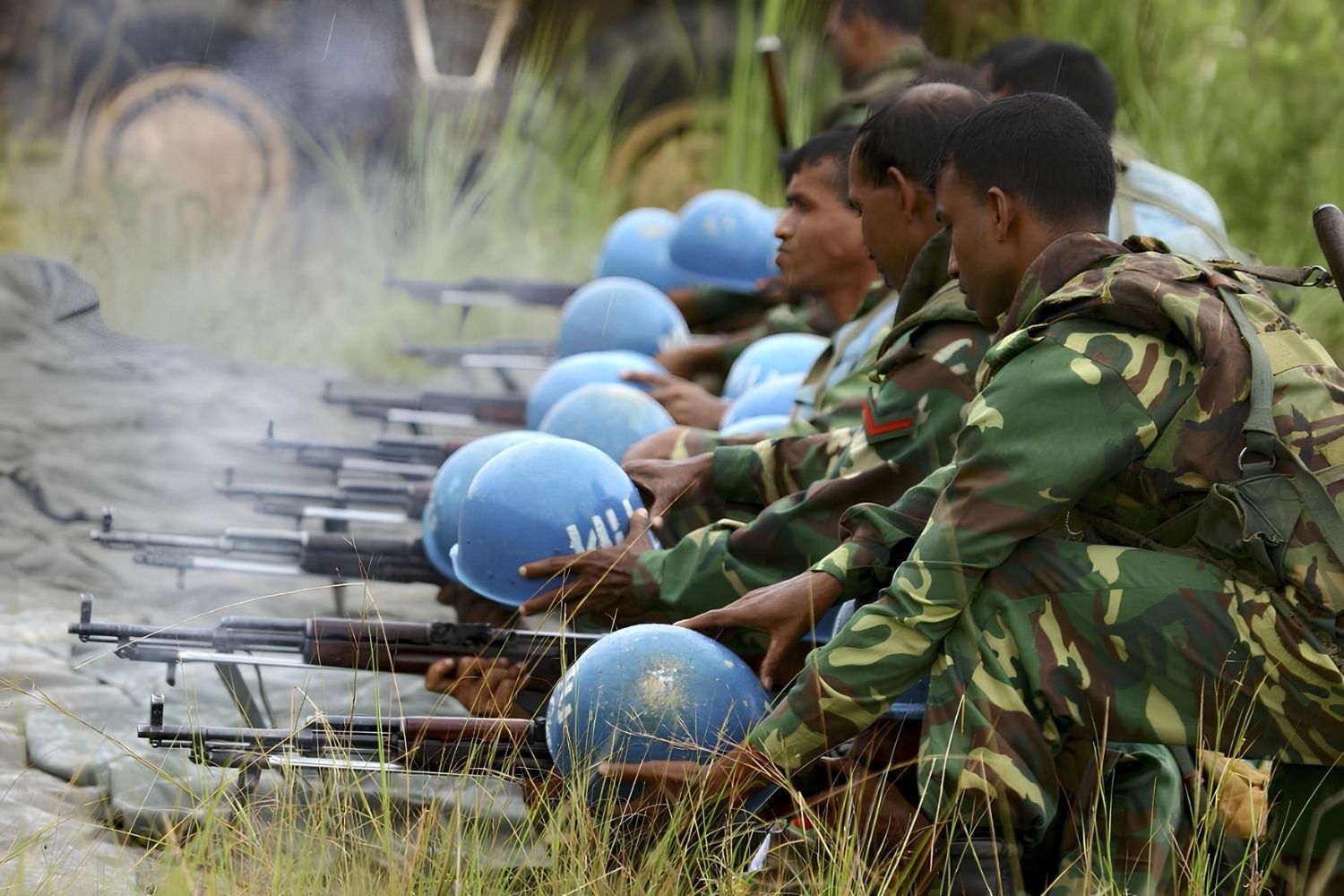
The Katanga Insurgency is a lesser-known yet significant chapter in African history. This conflict, which erupted in the 1960s, saw the mineral-rich Katanga province in the Congo attempt to secede. The struggle involved various factions, international interventions, and a complex web of political intrigue. Why did Katanga seek independence? The region's wealth in resources like copper and uranium made it a coveted prize, leading to clashes between local leaders and the central government. Understanding the Katanga Insurgency offers insights into the broader issues of post-colonial Africa, including the challenges of nation-building, the impact of external powers, and the enduring quest for self-determination.
Key Takeaways:
- The Katanga Insurgency was a conflict in Congo during the 1960s, involving secession, international intervention, and humanitarian impact, shaping the region's history and influencing future events.
- The conflict highlighted the challenges of post-colonial state-building in Africa and left a lasting legacy on Congo, impacting its political and social landscape for decades to come.
The Origins of the Katanga Insurgency
The Katanga Insurgency was a significant conflict in the Congo during the early 1960s. It involved various factions and had a profound impact on the region's history.
- The Katanga Insurgency began in 1960, shortly after Congo gained independence from Belgium.
- Moise Tshombe, the leader of the Katanga province, declared its independence from Congo on July 11, 1960.
- Katanga was rich in minerals, especially copper and uranium, making it economically significant.
- Belgium supported Katanga's secession, hoping to maintain control over its valuable resources.
- The United Nations intervened, sending peacekeeping forces to the region in an attempt to stabilize the situation.
Key Players in the Conflict
Several important figures and groups played crucial roles in the Katanga Insurgency, each with their own motivations and goals.
- Moise Tshombe was the president of the self-declared State of Katanga.
- Patrice Lumumba, Congo's first prime minister, opposed Katanga's secession and sought to reunify the country.
- Joseph Mobutu, who later became the dictator of Zaire, was a key military leader during the conflict.
- The United Nations Operation in the Congo (ONUC) was the peacekeeping mission deployed to address the crisis.
- Belgian mercenaries and military advisors provided support to Katanga's forces.
Major Battles and Events
The Katanga Insurgency saw numerous battles and significant events that shaped its course and outcome.
- The Battle of Jadotville in September 1961 involved Irish UN peacekeepers who were besieged by Katangese forces.
- Operation Morthor, launched by the UN in September 1961, aimed to capture key Katangese leaders but faced heavy resistance.
- The Siege of Elisabethville in December 1961 was a major confrontation between UN forces and Katangese troops.
- The UN's Operation Grandslam in December 1962 successfully captured key Katangese strongholds.
- The conflict officially ended in January 1963 when Katanga was reintegrated into Congo.
The Role of International Actors
International actors played significant roles in the Katanga Insurgency, influencing its dynamics and outcomes.
- The United States initially supported the UN's efforts but later shifted its stance due to Cold War dynamics.
- The Soviet Union backed Patrice Lumumba and opposed Katanga's secession, viewing it as a neocolonial plot.
- France maintained a neutral stance but provided covert support to Katanga through private channels.
- The Organization of African Unity (OAU) condemned Katanga's secession and supported Congo's territorial integrity.
- The UN Secretary-General, Dag Hammarskjöld, died in a plane crash in 1961 while en route to negotiate peace in the region.
Humanitarian Impact
The conflict had severe humanitarian consequences, affecting countless lives and communities in the region.
- Thousands of civilians were displaced due to the fighting and instability.
- The conflict led to widespread destruction of infrastructure, including schools, hospitals, and homes.
- Human rights abuses, including massacres and forced labor, were reported on both sides of the conflict.
- The UN peacekeeping mission faced criticism for its inability to prevent civilian casualties and protect vulnerable populations.
- The conflict exacerbated ethnic tensions and divisions within Congo, contributing to long-term instability.
Legacy and Aftermath
The Katanga Insurgency left a lasting legacy on Congo and the broader region, influencing subsequent events and developments.
- The conflict highlighted the challenges of post-colonial state-building in Africa.
- Katanga's mineral wealth continued to be a source of contention and conflict in Congo.
- The insurgency set a precedent for secessionist movements in other African countries.
- The UN's involvement in Katanga influenced its approach to future peacekeeping missions.
- The Katanga Insurgency remains a significant chapter in Congo's history, shaping its political and social landscape for decades to come.
Final Thoughts on Katanga Insurgency
The Katanga Insurgency remains a significant chapter in African history. It highlighted the complexities of post-colonial Africa, where newly independent nations grappled with internal divisions and external influences. The conflict, driven by ethnic tensions, economic interests, and political ambitions, left a lasting impact on the region. Understanding these events helps us appreciate the challenges faced by emerging nations during that era. The insurgency also underscores the importance of unity and cooperation in building stable, prosperous societies. As we reflect on the Katanga Insurgency, it's crucial to remember the lessons learned and strive for a future where such conflicts are avoided. This historical episode serves as a reminder of the resilience and determination of those who fought for their beliefs, shaping the course of their nation's history.
Frequently Asked Questions
Was this page helpful?
Our commitment to delivering trustworthy and engaging content is at the heart of what we do. Each fact on our site is contributed by real users like you, bringing a wealth of diverse insights and information. To ensure the highest standards of accuracy and reliability, our dedicated editors meticulously review each submission. This process guarantees that the facts we share are not only fascinating but also credible. Trust in our commitment to quality and authenticity as you explore and learn with us.
